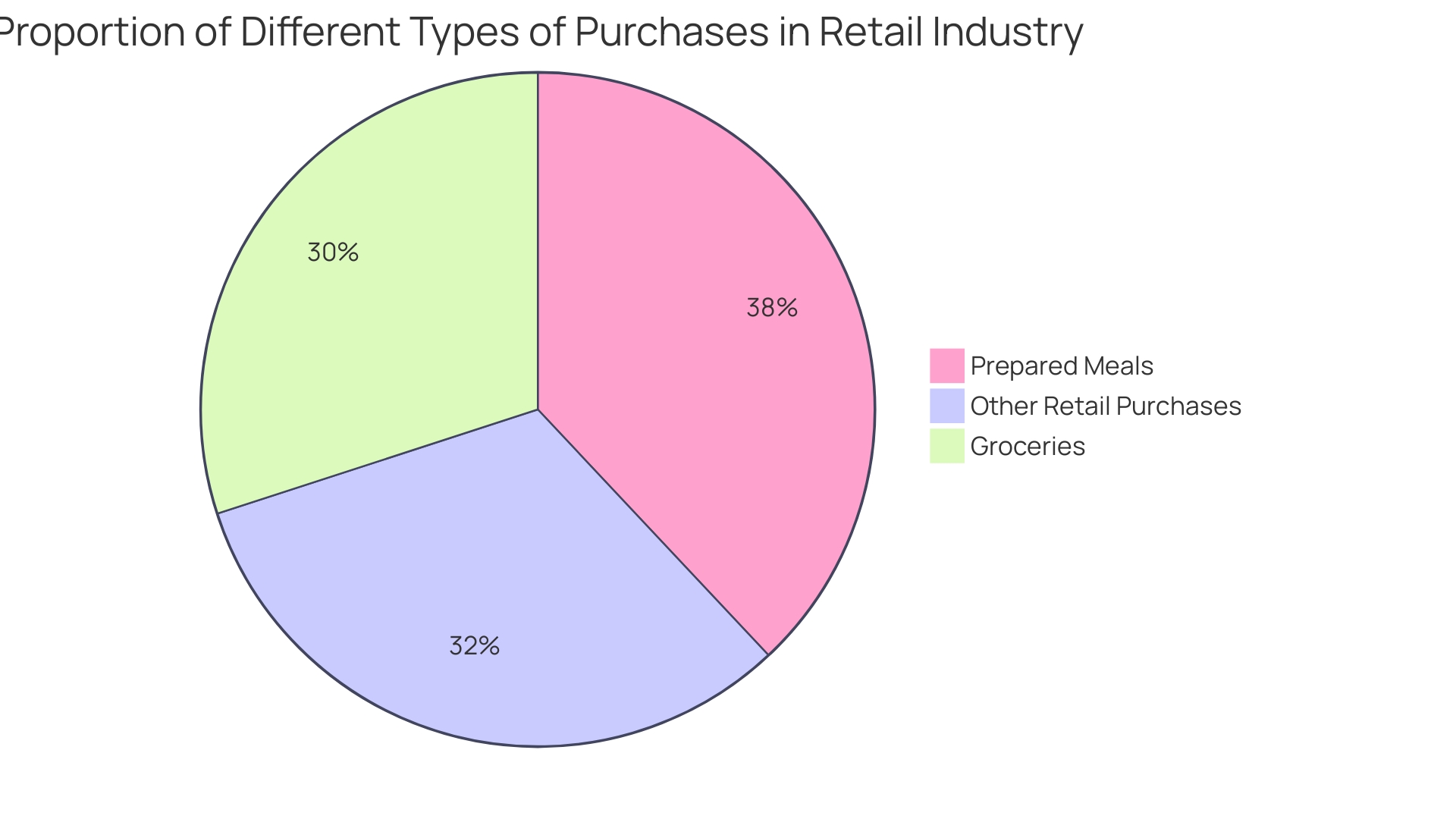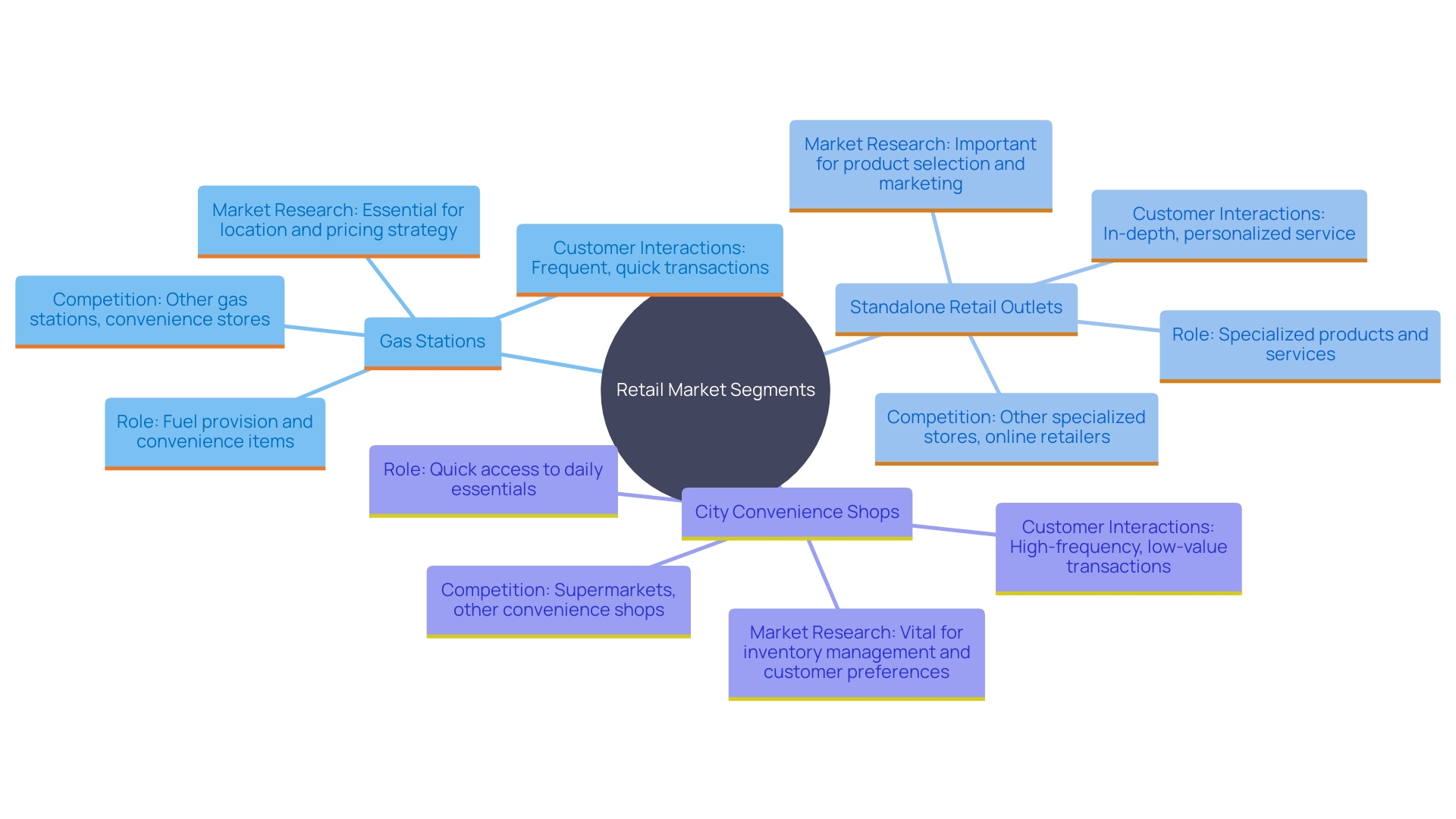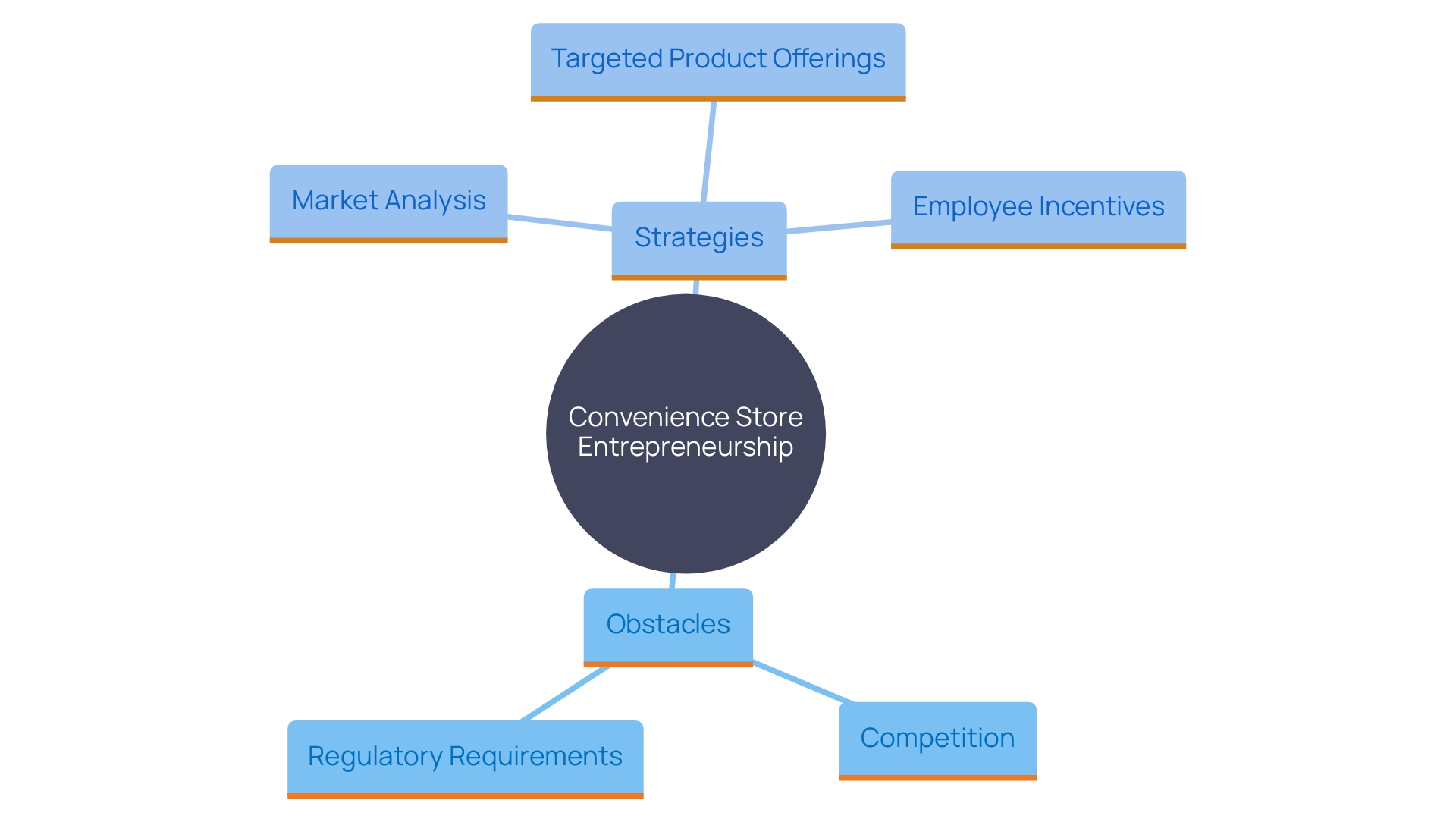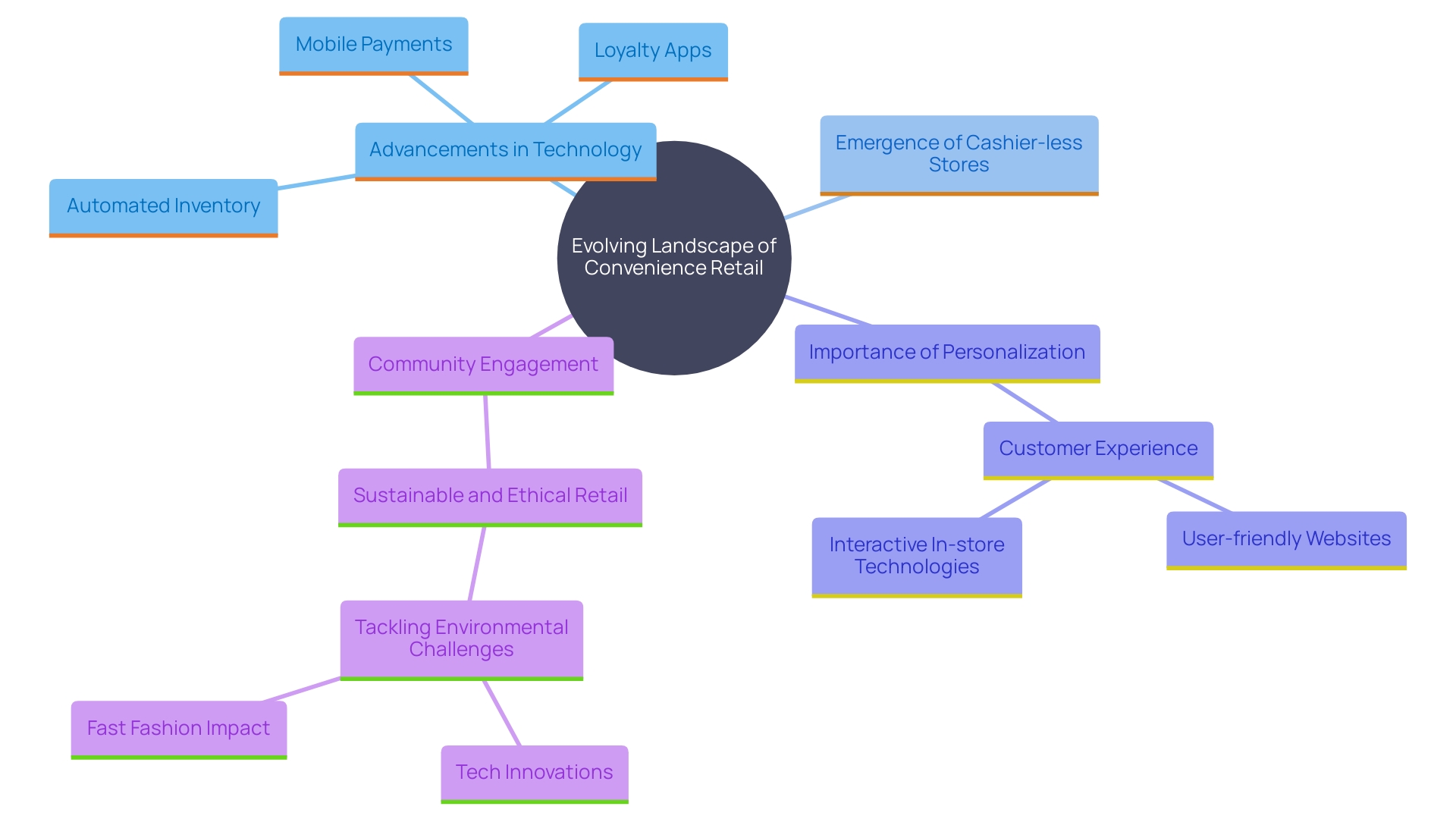Introduction
The convenience store sector in the United States is currently undergoing a period of expansion and change and is valued at more than $650 billion now because of evolving consumer habits and a greater desire for convenience as well as the integration of advanced technologies into the industry landscape recently noticed with seven out of ten customers buying pre made meals from these stores indicating how adaptable convenience stores are, in meeting various customer preferences.
Entrepreneurs are drawn to this industry because of its emphasis on buys and building connections with the community. It is essential for those in entering or growing their presence in this vibrant field to comprehend the market trends and important sectors as well as the obstacles and possibilities, within it. By adopting technologies and carefully planning strategies can help achieve long term success and financial gain in a constantly changing market environment.
Market Size and Growth
'The United States retail industry has experienced growth in recent years and is now valued at more than $650 billion due to changing consumer behaviors and an increased desire for accessible services at gas stations as well as independent shops catering to on-the-go lifestyles. With the market continuing to expand, it presents promising prospects for both consumers and businesses alike.'.
According to industry insights, nearly seven out of ten customers purchased prepared meals from a retail outlet at least once in the past month, indicating a significant increase from the prior year. This pattern highlights the flexibility of the industry and its capability to cater to a variety of consumer demands. Furthermore, the rising application of advanced technologies, such as data analysis and personalized customer interactions, is set to significantly change the service industry.
Entrepreneurs find the convenience retail sector appealing for reasons – its focus on spontaneous purchases in easily reachable locations and compact layouts sets it apart from larger grocery markets. Furthermore, these establishments serve as community gathering places, enhancing their appeal as a commercial opportunity. To thrive in this environment, it's essential to conduct comprehensive analysis, develop a solid business strategy, and grasp the ongoing expenses involved such as inventory and workforce costs.
The encouraging prospects for retail outlets are linked to the expansion of the sector and the addition of new services that improve customer ease and community engagement as well as attract potential business owners aiming to join this dynamic field.

Key Segments and Products
In the realm of retail markets, segmentation presents a variety of categories with prospects for both buyers and sellers to explore. With gas stations that include retail outlets as a mainstay offering fuel and an array of goods from snacks to household essentials. Standalone retail outlets take advantage of their locations to cater to spontaneous purchases, acting as local gathering spots in the community. City convenience shops encounter the hurdle of intense competition but thrive on the abundance of pedestrian traffic and the consistent need for fast and convenient products.
Sales of fuel play a role in generating revenue as they impact customer visits and total sales figures significantly.' Research indicates that over 80% of sales in the United States still come from retail settings. Underscoring the continued significance of brick and mortar stores in fostering customer interaction and meeting product demands.' Thus, having an understanding of industry dynamics and customer preferences is essential for those looking to enter or expand their presence in this sector.
Comprehensive industry analysis is vital for grasping rivalry and identifying the site is key in strategic planning. A recent article in Convenience Store News emphasized the significance of market research and insights to stay aligned with industry trends and enhance revenue and profits. This strategy falls in line with the omnichannel approach that focuses on seamless customer interaction and product delivery, across multiple platforms.
By understanding these segments and the relationships within them effectively, entrepreneurs can make decisions that leverage the advantages of the retail business model, resulting in ongoing success and growth.

Challenges and Opportunities in the Industry
The convenience store industry presents chances for growth while grappling with notable obstacles as well. The rising competition from retail corporations and digital delivery services can squeeze profit margins. Additionally navigating requirements like fuel sales and health protocols poses a complex and intimidating challenge, for entrepreneurs.
These obstacles can be successfully tackled through careful planning and focused promotional efforts. Crucial steps involve conducting analysis to understand the local environment and satisfy customer needs efficiently while also remaining competitive. Creating a strategy that includes comprehensive financial projections and marketing approaches, together with operational plans, is essential for establishing a strong foundation for success.
To stand out among competitors and thrive in the market industry of convenience stores it is beneficial to target segments like organic goods and health conscious choices, for a distinctive edge Likewise offering higher wages to employees than the local minimum can boost loyalty and productivity leading to increased profits By focusing on these aspects store owners can successfully maneuver through competition and establish prosperous enterprises

Technology and Innovation in Convenience Stores
The convenience store sector is undergoing a transformation due to advancements that are reshaping both how proprietors run their businesses and how shoppers make purchases. Evolving technologies such as mobile payment systems,loyalty apps and automated inventory management solutions are just scratching the surface. These innovations streamline operations. Enhance the shopping experience by simplifying it for retailers to serve tech-savvy clients. The rise of cashier-less establishments, like the Dublin Town To Go outlet using Zippin technology, illustrates this transformation in the sector. Customers can just swipe their card at the entrance to get in quickly and choose what they want before heading out without having to stand in a queue.
Furthermore, the National Association of Convenience Stores (NACS) indicated that there are over 127,000 convenience locations in the US offering fuel, which emphasizes the competitive environment of the sector. Innovative proprietors who embrace these improvements are positioned for success. As noted by Tim Tang, director of technology specialists at Hughes, the future of convenience retail relies significantly on personalization, engagement with the community, and data analysis. By embracing these tools and innovations in their stores business owners can improve how they run things and increase profits setting themselves up for lasting prosperity, in a changing environment.

Conclusion
The United States convenience store sector is currently at a turning point as it demonstrates substantial growth and responds to changing consumer preferences effectively.Valued at than $650 billion d this industry highlights the flexibility and perseverance of convenience stores in catering to the demands of contemporary shoppers.With 70% of consumers buying ready to eat meals from these stores it is clear that convenience stores are no longer just, for quick snacks but have become essential for everyday living.
Entrepreneurs who venture into this market are presented with a plethora of opportunities to explore and seize upon success factors at their disposal. Understanding the segments within the industry—ranging from convenience stores in gas stations to independent standalone outlets—allows business proprietors to strategically position themselves for leveraging impromptu sales and fostering community involvement. The significance of conducting market research cannot be emphasized enough; it plays a vital role in navigating competitive landscapes and pinpointing optimal locations conducive, to achieving prosperity.
Despite facing obstacles like increased competition and regulatory requirements in the market today; these challenges are not insurmountable with the approach of strategic thinking and creative solutions in place. To stand out amidst the competition and ensure long term success as a convenience store owner; one can consider targeting markets like organic products or prioritizing employee well being to gain a competitive edge that results in sustained profitability. Furthermore; staying up to date with advancements such as mobile payment options and automated inventory management systems is crucial for improving day, to day operations and enhancing customer experience.
In short the outlook appears promising for convenience stores long as they are open to change and creativity. By implementing tactics and grasping market trends business owners can prosper and make a beneficial impact, on their local areas. Following these principles will lead to success in a swiftly evolving environment.




